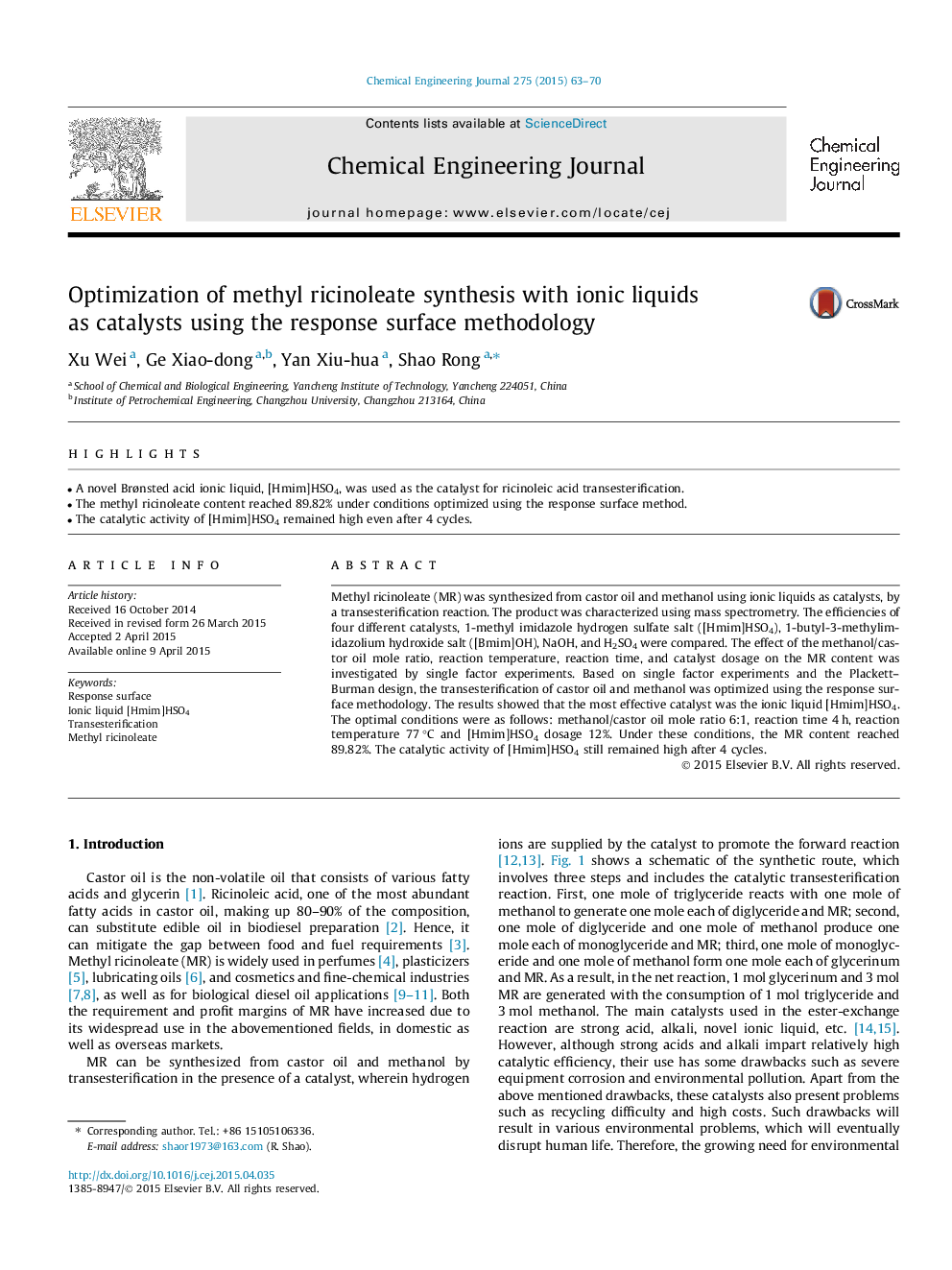| کد مقاله | کد نشریه | سال انتشار | مقاله انگلیسی | نسخه تمام متن |
|---|---|---|---|---|
| 146282 | 456365 | 2015 | 8 صفحه PDF | دانلود رایگان |
• A novel Brønsted acid ionic liquid, [Hmim]HSO4, was used as the catalyst for ricinoleic acid transesterification.
• The methyl ricinoleate content reached 89.82% under conditions optimized using the response surface method.
• The catalytic activity of [Hmim]HSO4 remained high even after 4 cycles.
Methyl ricinoleate (MR) was synthesized from castor oil and methanol using ionic liquids as catalysts, by a transesterification reaction. The product was characterized using mass spectrometry. The efficiencies of four different catalysts, 1-methyl imidazole hydrogen sulfate salt ([Hmim]HSO4), 1-butyl-3-methylimidazolium hydroxide salt ([Bmim]OH), NaOH, and H2SO4 were compared. The effect of the methanol/castor oil mole ratio, reaction temperature, reaction time, and catalyst dosage on the MR content was investigated by single factor experiments. Based on single factor experiments and the Plackett–Burman design, the transesterification of castor oil and methanol was optimized using the response surface methodology. The results showed that the most effective catalyst was the ionic liquid [Hmim]HSO4. The optimal conditions were as follows: methanol/castor oil mole ratio 6:1, reaction time 4 h, reaction temperature 77 °C and [Hmim]HSO4 dosage 12%. Under these conditions, the MR content reached 89.82%. The catalytic activity of [Hmim]HSO4 still remained high after 4 cycles.
Journal: Chemical Engineering Journal - Volume 275, 1 September 2015, Pages 63–70
